![Top Insights on Email and Text Higher Ed from the 2016 Student E-Expectations Survey [Exclusive]](http://media.higheredexperts.com/edu/wp-content/uploads/2016/07/RNL-2016-Email.png)
Exclusive Preview of the 2016 Student E-Expectations Survey Part 4: Email and Text
This is the last part of the 4-installment series on the April 2016 Ruffalo Noel-Levitz survey results. This survey focuses on the E-expectations of college bound seniors and juniors (n=3,117) and will be officially released tomorrow at RNL Conference. If you read the 1st part on social media, the 2nd on higher ed websites and the 3rd on Search & SEO, just skip to the next section without reading the short intro below
I’ve spent more than 10 hours working on this blog series to make it as useful as possible for you as I know you don’t have THAT time. Stephanie Geyer from RNL made this possible by sharing the complete data set of the E-Expectations Survey a few weeks ago.
This annual survey provides great insights on the digital expectations and habits of the new class of college freshmen (high school seniors) and the new crop of prospective students (high school juniors). That’s why it’s a must-read for higher ed marketers every year.
As you’ll see in some of the charts I’m sharing with you in this post, RNL has also included data from previous surveys.
Here’s the key to understand the abbreviations used in the charts:
- Co16 Jrs Spr 15: Juniors from the spring study in 2015, class of 16
- Co16 Srs Fall 15: Seniors from the fall study in 2015, class of 16
- Co16 Srs Spr 16: Seniors from the spring study in 2016, class of 16
- Co17 Jrs Spring 16: Juniors from the spring study in 16, class of 17
Email: Far From Dead for Prospective Students
While email might not be their favorite communication channel, almost all surveyed students report checking their email at least once a week.
More than 95% of Seniors and Juniors don’t just check their inbox, but report opening messages from schools of interest while a large majority even opens messages from unknown schools.
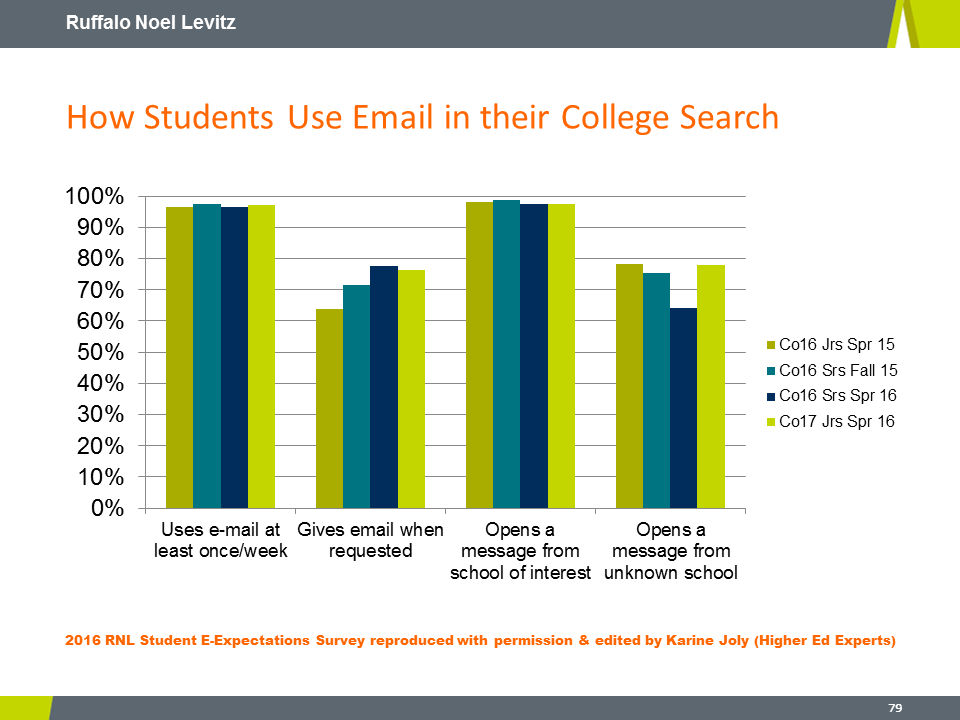
Surveyed prospective students see college emails as reliable sources of information about colleges, more reliable than social media as I explained in my 1st post about the 2016 E-Expecations Study.
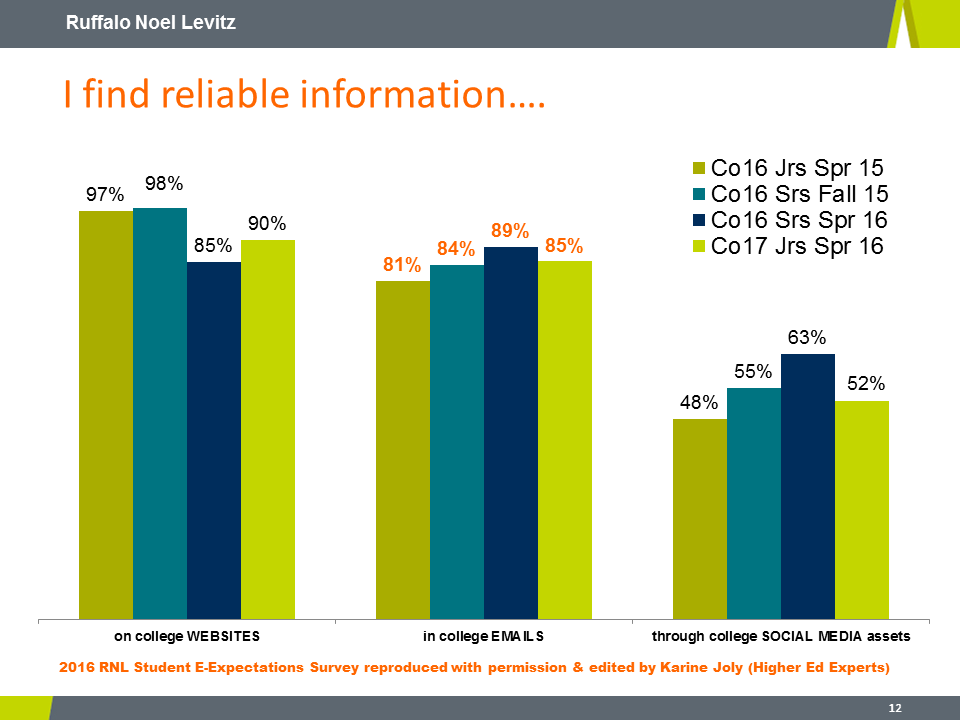
Students Ready to Share Their Email Address & Get Your Messages
According to the survey, about three quarters of the students have completed an online form to request more information on a college website.
When they reach out to schools in this way, 87% of Seniors and 85% of Juniors are willing to share their email address – the top option for contacting them before their cell phone number for 48%.
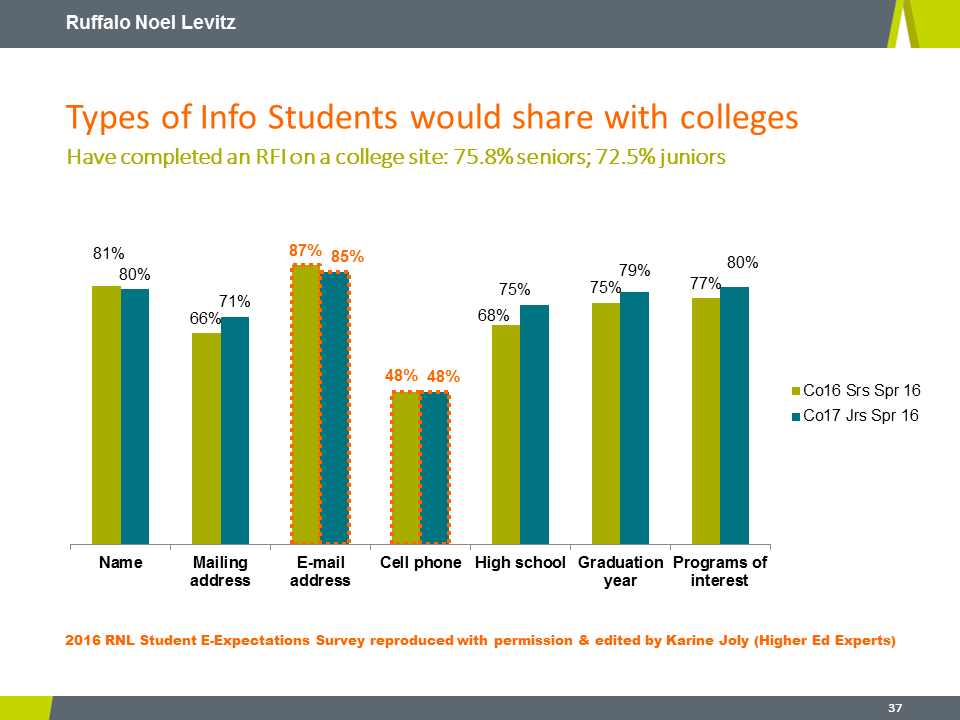
Unsurprisingly, email is the contact channel they expect schools to use in responding to their online inquiry with 80% of Seniors and 77% of Juniors selecting an email from an admissions counselor as an expected response.

Only 38% of Seniors and 35% of Juniors would expect a text message from an admissions counselor after submitting a request for information on a school website.
Are you Ready to Text Prospective Students?
While this might seem contradictory to the previous finding at first sight, 71% of Juniors and 74% of Seniors would give schools permission to text them.
Since only 36% of Seniors and 11% of Juniors received such messages, it looks like most schools are missing an opportunity to connect with students via text.
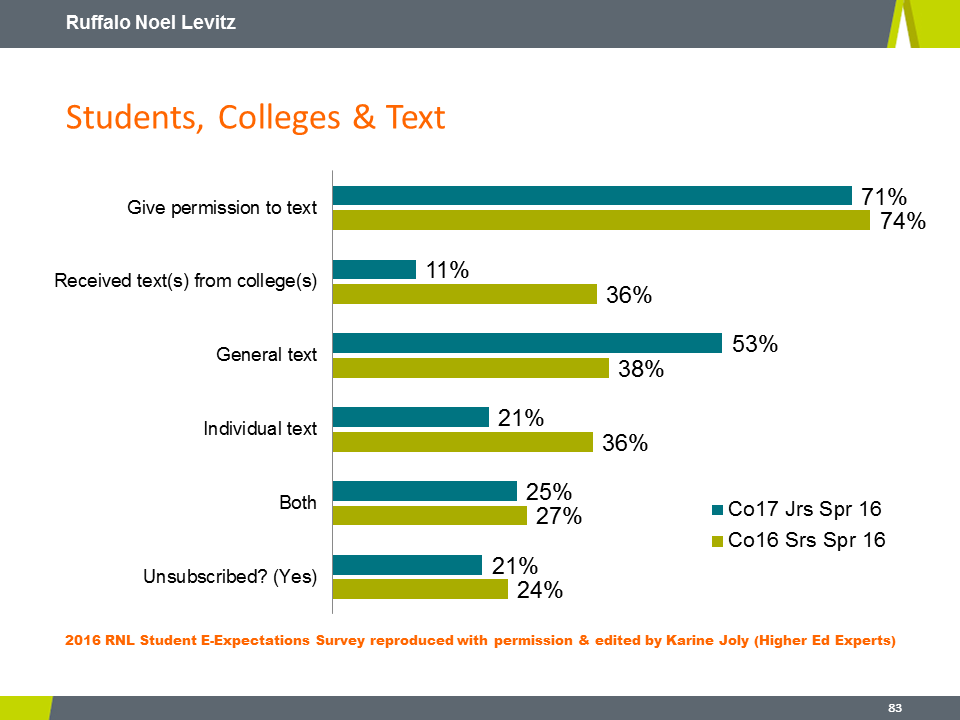
Not sure what type of content would be appropriate for your text to prospective students?
The survey got you covered! Results suggest that application details (status, missing docs), deadline reminders and even acceptance notifications would be welcomed by a large majority.
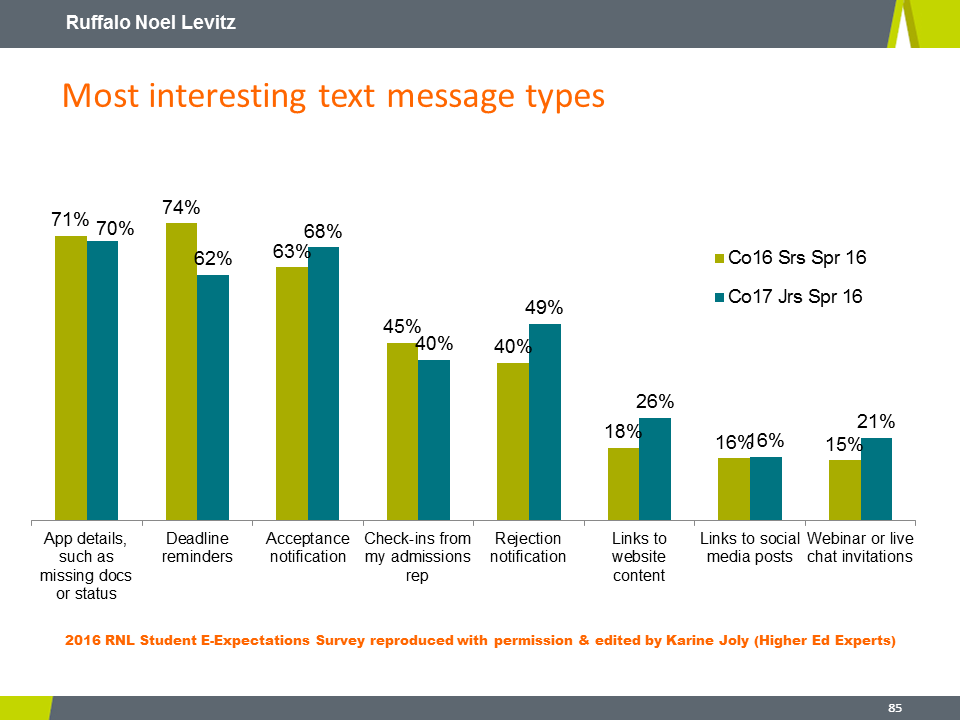
What surprised me a lot was the fact that 40% of Seniors and 49% (almost half of) Juniors would also see text as a good channel for rejection notifications. I guess this says a lot about this generation used to “break-ups via text.”
Fast and short – the key to deal with bad news?
Missed the first 3 parts of this series?
You can catch up by visiting the special archive page for my 4 posts on the 2016 Student E-Expectation Survey.
Tags: 2016 E-Expectations Research, Higher Ed News